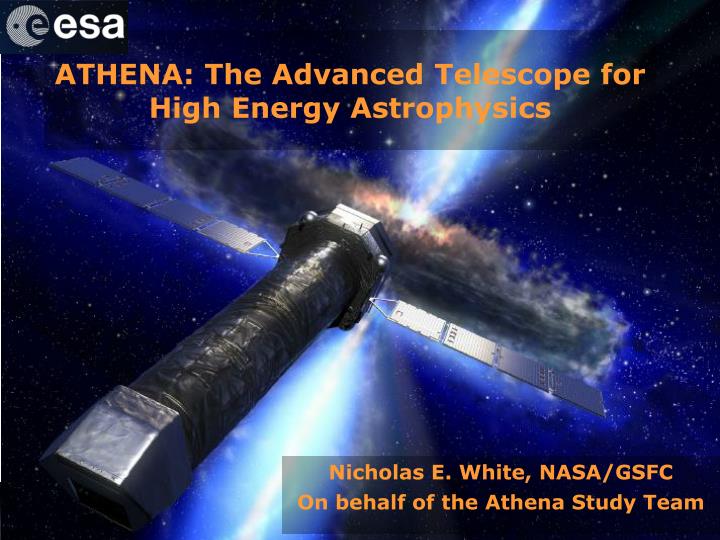The main science objectives for Athena mission are to find the answers for two key astrophysical questions:
- How does ordinary matter assemble into the large-scale structures we see today?
- How do black holes grow and shape the Universe?
To answer the second question, supermassive black holes (SMBH) must be revealed, even in obscured environments, out into the early Universe, and both the inflows and outflows of matter and energy as the black holes grow must be understood.

About Project
ATHENA (Advanced Telescope for Hight-ENergy Astrophysics) will be an X-ray telescope designed to address the Cosmic Vision science theme 'The Hot and Energetic Universe'.
On 27 June 2014, Athena was selected as the second L-class mission in ESA's Cosmic Vision 2015–25 plan. The mission has now entered the study phase; once the mission design and costing have been completed, it will eventually be proposed for 'adoption' around 2021, before the start of the construction phase.
Scientific instruments
To achieve the mission's science objectives, Athena carries a payload capable of spatially-resolved X-ray spectroscopy and deep wide-field X-ray spectral imaging with performance greatly exceeding that offered by current X-ray observatories. Its instrumentation will consist of:
- a cryogenic X-ray spectrometer called the X-ray Integral Field Unit (X-IFU),
- a Wide Field Imager (WFI).
Launch in 2031
A proposed timeline is launch in 2031 on an Ariane 5 carrier rocket or another launch vehicle with equivalent lift capability and fairing size. It will operate at L2, the second Lagrange point of the Sun-Earth system, in a large amplitude halo orbit. The operational orbit will be reached with a direct transfer trajectory towards L2, with limited ∆V demands. The L2 orbit is preferred to alternative scenarios (for example, low inclination Low Earth Orbit, or Highly Elliptical Orbit) as it provides a very stable thermal environment as well as good instantaneous sky visibility and high observing efficiency.
The baseline mission duration for Athena will be four years, with consumables sized to allow a six-year extension to maximise the return from this ambitious mission. With a conservative observing efficiency of 85%, Athena will be able to achieve the science goals of the Hot and Energetic Universe theme during the baseline mission, while preserving around 20% of the available time for observatory science.